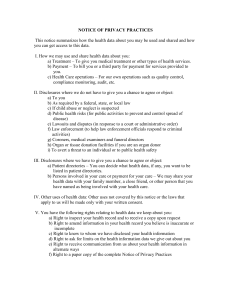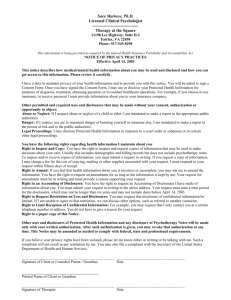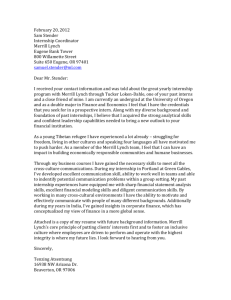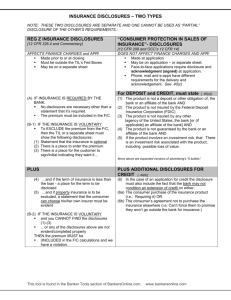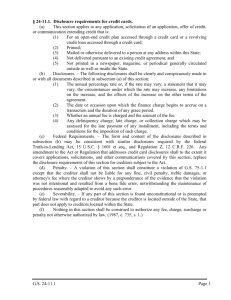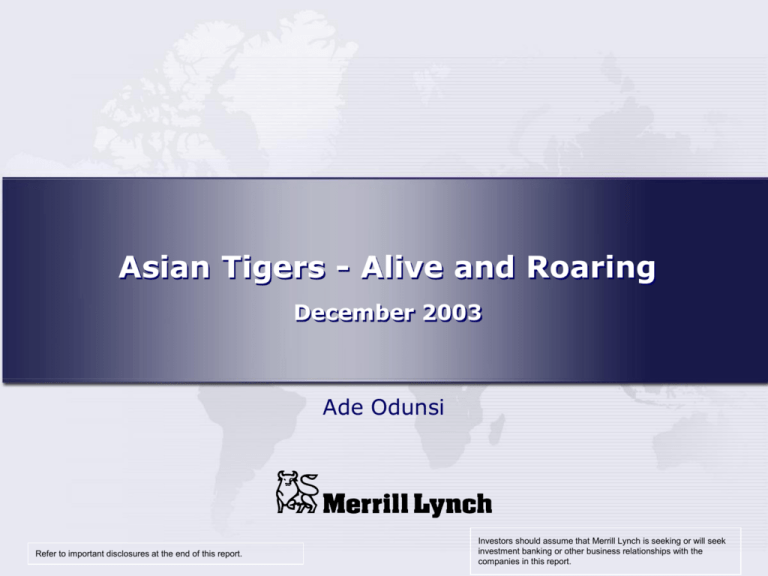
Asian Tigers - Alive and Roaring
December 2003
Ade Odunsi
Refer to important disclosures at the end of this report.
Investors should assume that Merrill Lynch is seeking or will seek
investment banking or other business relationships with the
companies in this report.
Part 1
Global Backdrop
Refer to important disclosures at the end of this report.
Investors should assume that Merrill Lynch is seeking or will seek
investment banking or other business relationships with the
companies in this report.
Global Backdrop
Like it or not, Asia is deeply entangled in the US’s massive external imbalance
Willingness of Asia to extend cheap credit to the US government and
consumer
Asian saving has helped fund tax cuts and credit growth in the US
A post-bubble US recession has largely been avoided
This has supported US consumption of Asian manufactured goods
The “mother of all vendor financing deals” (David Bowers, Merrill Lynch
Research)
Imbalances however are reaching worrisome levels
Refer to important disclosures at the end of this report.
3
Asian Resurrection
Asia is only 11% of the world economy but is growing 2.5x as fast
Over the 2001-2003 period China represents only 4% of Global GDP but
contributed 17.5% to Global GDP growth!
Refer to important disclosures at the end of this report.
4
If You Scratch My Back...
Asian trade deficit with US excluding Japan $179bn (of which China $114bn!)
Current Account = Capital Account
Asia purchased $161bn of US securities over the past 4 quarters (30% of CA
deficit)
Refer to important disclosures at the end of this report.
5
A Quick Word on China
Percent
20
Percent
20
15
15
10
10
5
5
0
0
Ex port v olume/Ex port market f or total goods
-5
84 85 86 87 88 89 90
Source: O EC D. Merrill Ly nch.
91
92
93
94
95
96
97
98
99
00
01
02
-5
US Bilateral trade surplus has jumped by 50% over the last 3 years (>$100bn)
50% of exports to US are foreign companies - FDI
Imports from China are not direct substitutes for US goods
China has emerged as the leading manufacturer of labour-intensive goods
China runs a trade deficit with the rest of the world
The shift in manufacturing jobs abroad has been happening since the 1950’s
The money comes straight back - China owns >$120bn of Treasuries
Refer to important disclosures at the end of this report.
6
Part 2
Why are We Concerned?
Refer to important disclosures at the end of this report.
Investors should assume that Merrill Lynch is seeking or will seek
investment banking or other business relationships with the
companies in this report.
The Elephant in the Corner
CA deficit reaches $520bn - never bet against the US consumer!
Refer to important disclosures at the end of this report.
8
US Dependence on Foreign Capital
“Foreign capital” increasingly means Asian capital
Asia bought $23bn of US assets in September alone
Refer to important disclosures at the end of this report.
9
“Hot Money” Dominates
The upturn in the US stock market this year has not convinced foreigners to make
long-term investments in the US
At the peak of the bubble, US equity inflows from overseas reached $200bn
Refer to important disclosures at the end of this report.
10
It’s a Little Known Fact...
The rally in
the US Equity
market is
domestically
driven!
TIC = US Treasury International Capital System
Significant funding of the CA deficit is by foreign Central Banks (>$1 trillion)
Bank of Japan is the largest buyer of Treasury securities (> $130bn this year)
Net foreign buying of corporate bonds has outstripped Treasury securities over
the last 12 months - the search for yield
A worrying development: foreign net purchases of US financial assets dropped
from $62bn in August to $16bn in September
Refer to important disclosures at the end of this report.
11
Pent-up Demand Not in US
% of GDP
6
Average of Past Cycles
Current Cycle
4
4
2
2
0
0
-2
-2
-4
-4
-6
-12m
-3m
Start
End
+3m
+6m
Months Pre-Post Recession
Source: Our calculations. NBER business cycle dates.
Private sector financial balance in the US, previous eight cycles.
% of GDP
6
-9m
-6m
+9m
-6
+12m
There are three common conditions to a lasting pickup in private demand
Rising confidence and low real interest rates are met in each of the G3
Private financial surpluses in Japan are 5% of GDP; 3% in the Eurozone (2003);
-1% in the US
Refer to important disclosures at the end of this report.
12
Part 3
What Does This All Mean?
Refer to important disclosures at the end of this report.
Investors should assume that Merrill Lynch is seeking or will seek
investment banking or other business relationships with the
companies in this report.
Reality Check
This financing arrangement between Asia and the US has benefited both
Asia needs US demand just as much as US needs Asian capital
Talk of protectionist policies by the US are largely political
The ‘basic’ problem with the deficit is that it is HUGE
Low yields on US assets make the deficit increasingly difficult to finance
How does the US recovery sustain itself?
The problem ‘officially’ recognised at the G7 meeting in September 2003 - this
likely marks the beginning of the end of this dynamic
Refer to important disclosures at the end of this report.
14
What Is Our View?
Rising local activity will enable Asia to grow out of its CA surplus
‘Competitive reflation’ has boosted Asian economies
–
Aggressive FX intervention by Asian Central Banks to limit currency appreciation and
maintain competitiveness (also limited ability to sterilise)
–
Lower interest rates
–
Massive growth in Asian FX reserves (Treasuries: $15bn/month on average)
But rising employment and utilization rates pushing up inflation
Business is booming and Asian consumers have a large pool of savings
Strong economic outlook will be the catalyst for acceptance of currency
appreciation in Asia
THE END GAME: redistribution of growth from the US to Asia. Asian
consumers will be the main drivers of demand
Refer to important disclosures at the end of this report.
15
The Flip Side
Slower US growth (…but Q3 GDP growth 8.2%)
Higher returns in Asia attract capital from US securities markets
US interest rates adjust higher resulting in lower demand
Fed committed to keeping short-term interest rates low
The US dollar must devalue to maintain balance
Imbalances correct gradually
Refer to important disclosures at the end of this report.
16
Deja Vu
The Plaza Accord (1986)
Trade weighted USD index peaked in Feb ‘01 and has fallen 23%
EURUSD FX rate has fallen 42%
Refer to important disclosures at the end of this report.
17
What Else Could Happen?
Massive US recession?
–
Fed to keep interest rates ultra-low for an extended period
Competitive reflation in Asia results in a major inflation shock, impacting real
rather than nominal exchange rates
A combination of all 3 factors
In everyone’s interest to engineer a slooowwww adjustment
Refer to important disclosures at the end of this report.
18
Part 4
Money Talks
Refer to important disclosures at the end of this report.
Investors should assume that Merrill Lynch is seeking or will seek
investment banking or other business relationships with the
companies in this report.
The FX ‘Virtual’ Market
Huge (For comparison, US Treasuries $400bn/day)
Liquid
FX Daily Turnonver ($bn)
1,400
Sophisticated
1,400
1,200
1,200
990
1,000
Highly automated
600
Fast
750
800
570
400
200
Unregulated (!?*)
24 hour global market
1989
1992
1995
1998
2001
Source: BIS Central Bank Survey 2001
UK
31.10%
USA
15.70%
Japan
9.10%
Singapore
6.20%
Germany
5.40%
Switzerland 4.40%
Hong Kong 4.10%
Refer to important disclosures at the end of this report.
20
FX as an Asset Class
Massive increase in interest in FX as an asset class i.e. currency speculation
Driving component of many investment bank’s recent profitability
FX is not cyclical - consistently profitable!
1) Trending markets - US dollar in a long-term structural decline
2) Quest for alpha
3) A search for ‘alternative’, non-correlated assets
4) A little known fact - FX is a less risky asset
Annualized Standard Deviation
EURUSD FX Rate
P&G
S&P
Dow
FTSE
IBM
10.0%
15.0%
18.0%
18.0%
21.0%
25.0%
What are chances of the FX rate going to zero?
CB’s tend to intervene if volatility gets too high
Refer to important disclosures at the end of this report.
21
But FX is a Zero-Sum Game, Right?
Another little known fact - not every participant in the FX market is a profit
maximizer!
Central Banks
For example:
- Bank of England ‘defending’ the pound in 1992
- Bank of Japan sales of Yen for US dollars this year have exceeded $130bn
Yen has still strengthened by over 12%!
International corporations
Private individuals
Professional currency managers make up less than 1% of daily turnover
SIGNIFICANT PROFIT POTENTIAL!
Refer to important disclosures at the end of this report.
22
Show Me the Money
Buy Asian equities
–
–
–
India
Thailand
Taiwan
Spot
Dec ‘03
Mar ‘04
Jun ‘04
Sep ‘04
Dec ‘04
2.93
11.35
3.10
10.80
3.10
11.00
3.20
11.25
3.25
11.40
3.40
11.25
6.59
3.95
4.65
1,476
222
262
7.00
3.87
4.61
1,450
216
257
6.85
3.69
4.50
1,570
209
255
6.85
3.52
4.40
1,630
206
257
7.20
3.28
4.30
1,700
198
260
7.50
3.23
4.30
1,755
196
261
1,203
10.97
34.11
1.72
7.77
1,170
10.93
33.80
1.73
7.80
1,100
10.73
33.50
1.72
7.80
1,060
10.60
33.00
1.71
7.80
1,020
11.09
32.50
1.70
7.80
1,000
11.11
32.00
1.70
7.80
Latin America
USD-BRL
USD-MXN
Emerging Europe
USD-ZAR
USD-PLN
EUR-PLN
USD-TRL1
USD-HUF
EUR-HUF
Asian Bloc
USD-KRW
JPY-KRW
USD-TWD
USD-SGD
USD-HKD
Source: Merrill Lynch
Forecast as of November 26, 2003. Spot exchange rate at previous NY close. The left of the currency pair is the denominator of the exchange rate. 1 (000) per USD.
Refer to important disclosures at the end of this report.
23
Show Me the Money
Chinese Renminbi (CNY) is a pegged currency (8.2771 CNY per USD)
Active ‘off-shore’ forward market (non-deliverable market)
Refer to important disclosures at the end of this report.
24
Disclaimers
The analyst(s) responsible for covering the securities in this report receive compensation based upon, among other factors, the overall profitability of Merrill Lynch,
including profits derived from investment banking revenues.
Copyright 2003 Merrill Lynch, Pierce, Fenner & Smith Incorporated (MLPF&S). All rights reserved. Any unauthorized use or disclosure is prohibited. This report
has been prepared and issued by MLPF&S and/or one of its affiliates and has been approved for publication in the United Kingdom by Merrill Lynch, Pierce,
Fenner & Smith Limited, which is regulated by the FSA; has been considered and distributed in Australia by Merrill Lynch Equities (Australia) Limited (ACN 006
276 795), a licensed securities dealer under the Australian Corporations Law; is distributed in Hong Kong by Merrill Lynch (Asia Pacific) Ltd, which is regulated by
the Hong Kong SFC; and is distributed in Singapore by Merrill Lynch International Bank Ltd (Merchant Bank) and Merrill Lynch (Singapore) Pte Ltd, which are
regulated by the Monetary Authority of Singapore. The information herein was obtained from various sources; we do not guarantee its accuracy or completeness.
Additional information available.
Neither the information nor any opinion expressed constitutes an offer, or an invitation to make an offer, to buy or sell any securities or any options, futures or
other derivatives related to such securities ("related investments"). MLPF&S and its affiliates may trade for their own accounts as odd-lot dealer, market maker,
block positioner, specialist and/or arbitrageur in any securities of this issuer(s) or in related investments, and may be on the opposite side of public orders.
MLPF&S, its affiliates, directors, officers, employees and employee benefit programs may have a long or short position in any securities of this issuer(s) or in
related investments. MLPF&S or its affiliates may from time to time perform investment banking or other services for, or solicit investment banking or other
business from, any entity mentioned in this report.
This research report is prepared for general circulation and is circulated for general information only. It does not have regard to the specific investment objectives,
financial situation and the particular needs of any specific person who may receive this report. Investors should seek financial advice regarding the
appropriateness of investing in any securities or investment strategies discussed or recommended in this report and should understand that statements regarding
future prospects may not be realized. Investors should note that income from such securities, if any, may fluctuate and that each security's price or value may rise
or fall. Accordingly, investors may receive back less than originally invested. Past performance is not necessarily a guide to future performance.
Foreign currency rates of exchange may adversely affect the value, price or income of any security or related investment mentioned in this report. In addition,
investors in securities such as ADRs, whose values are influenced by the currency of the underlying security, effectively assume currency risk.
Refer to important disclosures at the end of this report.
25


